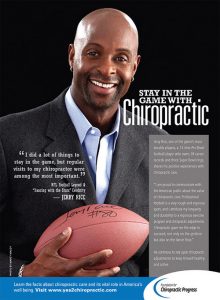Auto Accident Folklore—Being Thrown Clear and Bracing for Impact

You have no doubt overheard someone at work or at a party telling his friends that he never wears a seat belt—and that he has some really good reasons. The story usually goes something like this: He heard from a buddy he knows that a friend of a friend who was not wearing a seat belt had a bad car accident and walked away from it because he was thrown clear of the car. This is one of the most pervasive car safety myths out there. And if you believe this myth, you could be setting yourself up for serious injury or death.
Although there are a small handful of cases in which someone has survived a car accident after being thrown from the car, this is a very rare occurrence. In fact, you actually have a 25 percent greater chance of being killed if thrown from the car. Just consider the physics of the situation. The force applied to your body when a collision occurs can be strong enough to propel you 150 feet, which is equivalent to about 15 car lengths. And you would not just be flying gracefully through the air either. First, your body may go crashing through the windshield, it may scrape along the rough asphalt for yards, and then you could end up getting crushed by your own car or someone else’s. This is not to mention the other objects you may be hurled into when flung from the car. Statistics from a study performed by researchers at James Madison University show that the proper use of a seat belt reduces serious injuries from traffic accidents by 50 percent and fatalities by 60 to 70 percent. It’s a simple thing that can protect your health and save your life—wear seat belts.
Another common myth is that bracing for impact causes more damage to your body, and that it’s best to remain relaxed. Of course, actually having the ability to choose one way or another about bracing has a lot to do with how much time you have before impact. Many accidents occur in the blink of an eye, so suggesting that someone should “stay relaxed” has really limited practical value. However, the most current science indicates that if you have time, bracing for impact will likely reduce the amount of injury, particularly to tendons and ligaments.
One of the most common types of injury from an auto accident is whiplash, which occurs in about a third of all collisions. If you see a car approaching in your rear view mirror that you believe is going to collide with yours, the best thing to do is to press your body against the seatback, with your head pressed firmly against the head rest. This way you are less likely to suffer injuries to the ligaments in your neck, as your head will not be slammed back against the head rest, then flung forward.
Auto accidents are never pleasant, but by knowing the facts about auto safety you can help reduce your chances of sustaining a serious injury. If you do end up in an accident, it’s always a good idea to get a medical evaluation promptly, even if you think you haven’t suffered any significant injuries. Many auto injuries take time for their symptoms to become apparent or significant enough for victims to recognize how badly they may have been hurt. By the time the symptoms are obvious, the victim and his or her doctor may have lost a valuable opportunity to treat the underlying injuries. Please call or visit the office if you or someone in your family has recently been involved in an auto accident.
 According to the National Institutes of Health, lower back pain is the second most common form of chronic pain after headaches. Experts estimate that approximately 80% of Americans will seek help for low back pain at some point during their lives. Public health officials and insurers estimate that Americans spend $50 billion each year on treatments that are often ineffective. The standard treatment for lower back pain is to take muscle relaxants, painkillers or anti-inflammatory medications, along with physical therapy and back exercises. However, few medical interventions relieve pain reliably, and continuing to take painkillers on a long-term basis is not advised. Massage, on the other hand, has been found to be an effective way of dealing with back pain on a regular basis.
According to the National Institutes of Health, lower back pain is the second most common form of chronic pain after headaches. Experts estimate that approximately 80% of Americans will seek help for low back pain at some point during their lives. Public health officials and insurers estimate that Americans spend $50 billion each year on treatments that are often ineffective. The standard treatment for lower back pain is to take muscle relaxants, painkillers or anti-inflammatory medications, along with physical therapy and back exercises. However, few medical interventions relieve pain reliably, and continuing to take painkillers on a long-term basis is not advised. Massage, on the other hand, has been found to be an effective way of dealing with back pain on a regular basis. Learning the risk factors of sciatica can help you minimize your risk of developing it. A recent study sheds light onto what makes you more likely to develop sciatica.
Learning the risk factors of sciatica can help you minimize your risk of developing it. A recent study sheds light onto what makes you more likely to develop sciatica.
 Countless studies have demonstrated that chiropractic care is a safe and effective way to treat musculoskeletal complaints like back pain, neck pain, or sciatica. Now a new study from Switzerland has looked at the relative benefits of chiropractic compared to medical care for the most common types of pain issues.
Countless studies have demonstrated that chiropractic care is a safe and effective way to treat musculoskeletal complaints like back pain, neck pain, or sciatica. Now a new study from Switzerland has looked at the relative benefits of chiropractic compared to medical care for the most common types of pain issues. Back pain is an expensive health problem for both patients and businesses.
Back pain is an expensive health problem for both patients and businesses. 
 When it comes to helping elite athletes prevent and recover from injuries—as well as achieve peak performance—chiropractic care can offer many advantages. That’s why large numbers of professional and college sports teams throughout the U.S. have turned to chiropractors over the past decade. The Philadelphia Phillies is one such team, and Dr. Michael Tancredi is one such chiropractor. As a Doctor of Chiropractic, a Certified Chiropractic Sports Physician, an Active Release Technique Instructor and Practitioner, and a certified athletic trainer, Dr. Tancredi clearly understands the valuable role that chiropractic care can play in keeping teams healthy and performing at their best.
When it comes to helping elite athletes prevent and recover from injuries—as well as achieve peak performance—chiropractic care can offer many advantages. That’s why large numbers of professional and college sports teams throughout the U.S. have turned to chiropractors over the past decade. The Philadelphia Phillies is one such team, and Dr. Michael Tancredi is one such chiropractor. As a Doctor of Chiropractic, a Certified Chiropractic Sports Physician, an Active Release Technique Instructor and Practitioner, and a certified athletic trainer, Dr. Tancredi clearly understands the valuable role that chiropractic care can play in keeping teams healthy and performing at their best. Manual therapies have been used to treat musculoskeletal disorders for thousands of years. Practitioners around the world—in countries with many different cultural influences and diverse medical traditions—have used their hands to manipulate various parts of the body to stimulate healing. “Manual” literally means “by hand.” Thus, manual therapies consist of healing techniques that use the hands. There are more than two dozen techniques used worldwide. Among the most commonly known are acupressure, chiropractic, massage therapy, physiotherapy, reflexology, Rolfing and shiatsu.
Manual therapies have been used to treat musculoskeletal disorders for thousands of years. Practitioners around the world—in countries with many different cultural influences and diverse medical traditions—have used their hands to manipulate various parts of the body to stimulate healing. “Manual” literally means “by hand.” Thus, manual therapies consist of healing techniques that use the hands. There are more than two dozen techniques used worldwide. Among the most commonly known are acupressure, chiropractic, massage therapy, physiotherapy, reflexology, Rolfing and shiatsu. Perhaps the most frequent injury involving automobiles comes from closing the door. Nearly 150,000 times a year, someone is injured in this fashion, and that’s with the car parked or stationary. This includes doors closing on fingers. Another 10,000 are injured by using a jack and 74,000 have been injured by a car or car part falling on them.
Perhaps the most frequent injury involving automobiles comes from closing the door. Nearly 150,000 times a year, someone is injured in this fashion, and that’s with the car parked or stationary. This includes doors closing on fingers. Another 10,000 are injured by using a jack and 74,000 have been injured by a car or car part falling on them.